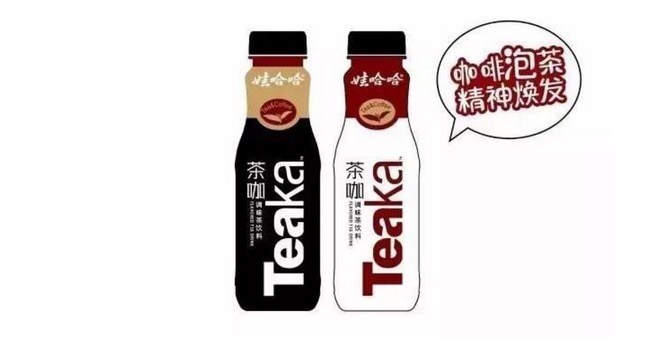Coffee consumption in China is growing at 12.8% annually. Starbucks is strong across borders.
Starbucks announced on July 14th that it had become the global licensee and investor of Princi, an Italian restaurant brand. Howard, chairman and CEO of Starbucks Coffee, said, "We have never baked food in Starbucks stores in 45 years, and this unprecedented cooperation will change all that."
The first "bakery" launched by Starbucks in 45 years has also included Shanghai in its first strategic opening, which will open a year earlier than the New York store in 2017.
But, as Howard said, will Princi be the best partner for Starbucks Coffee and its new cash cow?
Why did Starbucks open a bakery?
Whether you can become a cash cow or not, you have to start with the "Little 99" of Starbucks' baking shop.
Making a good, delicious, hot cup of coffee has never been the only goal of Starbucks. It always wants more than we can think of.
Back in 2011, Starbucks bought juice maker EvolutionFreshInc., for $30 million and opened its first juice bar in 2012. This juice bar has removed the name and logo of "Starbucks Coffee" and become an independent and healthy fruit and vegetable juice store. At the time, Howard said they didn't just buy a beverage company, but used the acquisition to reposition themselves to build a multibillion-dollar health food business.
As a result, Starbucks has gone farther and farther along this road.
In 2012, Starbucks announced that it had entered the baking world by acquiring BayBreadLLC and its LaBoulangeBakery brand from investment firm NextWorldGroup for $100m. So we can finally see all kinds of cakes and meals in the glass window of Starbucks. This is a large-scale acquisition in Starbucks' history, and it can be said that LaBoulange shows Starbucks' ambition to further expand its food business.
The story is not finished yet.
At the end of the same year, Starbucks bought Teavana, a local tea retailer, for a "higher price" of $620 million. It seems that Starbucks is not willing to stay in Western food and beverage, but also wants to integrate oriental tea culture to open the door to cosmopolitan drinks. Starbucks opened its first teahouse in Manhattan in 2013, and Howard plans to have 1000 stores by 2018.
Now Starbucks has acquired Princi, a high-end Italian bakery brand. At this point, we can probably understand Starbucks'"habitual" acquisition behavior.
China gold mining field
But surprisingly, this time Starbucks seems to have invested an unprecedented amount of effort in the bakery.
According to Starbucks, Princi will open a special baked coffee shop in Shanghai, and the store will be twice the size of the traditional Starbucks store, and may have a total area of 2700 square meters! This kind of "bringing extraordinary retail experience in the form of breakthrough innovation" aims at the big market of China in the first place.
We dare not say that it is the Chinese market that created the birth of 2700 square meters of Princi, but the Chinese market is indeed the reason for Starbucks' hard investment.
Howard once said that China's middle class, which is Starbucks' biggest market, will grow from 300 million to 600 million within 10 years.
At the same time, the hard data also show that the potential of China's coffee market is growing rapidly. From 1998 to 2012, China's coffee consumption rose from 199000 bags to 1.1 million bags, an annual growth rate of 12.8%. If we continue at this rate, China's coffee consumption will reach 2.8 million bags in 2020, and China's coffee market will reach 300 billion yuan in 2020.
This is a piece of fat that is big enough to make coffee producers around the world salivate.
Starbucks' net income in the Asia-Pacific region, which is dominated by China, reached $2.4 billion in fiscal 2015, up 112% from the previous year, according to Starbucks' annual report. Meanwhile, Starbucks accounted for 73.3% of the Chinese coffee chain in 2015, taking the top spot by an absolute margin, according to EuromonitorInternational.
At the same time, Starbucks' sales in the "home" United States have gradually slowed, with its share of US market revenue falling from 77.5% to 69.4% between 2011 and 2015. Howard said he wouldn't be surprised if one day there are more Starbucks stores in China than in the United States.
Therefore, Starbucks spent a lot of money in Shanghai to prepare the Princi bakery, it is aimed at the Chinese middle class, and launched a large-scale sales "campaign".
This battle has long been a forerunner.
Last year, Starbucks announced a partnership with Kang Shifu, a Chinese beverage company, which will be responsible for the production and sale of its beverage products on the mainland. The two sides will jointly expand distribution channels in the Chinese market, which also means that a large number of Starbucks instant drinks will enter China.
Howard said that the "marriage" with Master Kang will bring 1 million ready-to-drink Frappuccino distribution points for Starbucks China, which will be a strong guarantee for Starbucks to gain long-term competitiveness in China.
In addition, some people in the industry have received news that Starbucks Teavana Teahouse will enter China in the second half of this year. Although Starbucks says it has no plans to open brick-and-mortar stores, its tea products are going to "visit China".
At the beginning of this year, a Starbucks spokesman said that the Teavana will change its original model and enter the Chinese market: tea bags will be the main sales at the initial stage. As a traditional oriental drink, the production and sales of tea will be a sharp weapon for Starbucks to go deep into Chinese consumers and firmly grasp the Chinese beverage market.
In this way, Princi will be another big gold mine built by Starbucks in China's gold mining field.
But will this gold mine really bring it a steady stream of gold?
the overturned cart in front is a warning for those behind
Maybe Howard needs to make his own cup of Starbucks coffee, sit in the store and think about it. It's far from that simple.
In the case of Starbucks' previous "cross-border" business, it doesn't seem as amazing as it should be.
Earlier this year, Starbucks announced that it would close its four Teavana tea bars, three of which were converted back to Starbucks coffee shops and the other closed completely. At that time, Starbucks was determined to open 1000 Teavana tea bars worldwide within five years. But in the next two years, only five stores opened.
This tragic ending seems to be in great contrast to Starbucks' ambitious spending of $600 million.
The reason behind this is that, on the one hand, European enthusiasm for tea is not so high, and on the other hand, Starbucks operates tea bars independently of coffee bars, but people prefer to see Starbucks coffee and desserts in tea bars.
And this is just the tip of the iceberg.
LaBoulange, which we mentioned at the beginning, was also a "bakery" held in the palm of Starbucks' hand. Since its acquisition of LaBoulange in 2012, Starbucks has increased its existing 19 stores in the United States to 23. But in 2015, Starbucks announced that all 23 stores would be closed. Those types of bread in direct stores will be transferred to the menu of Starbucks coffee shops.
Starbucks said it closed all its stores because LaBoulange stores were not in line with the company's long-term development.
So will the Princi this time meet the requirements of Starbucks' long-term development?
If LaBoulange stores are aimed at American audiences, while Princi is facing a huge Chinese market, then perhaps Taiwan's famous baking brand 85C can also give Huo Dehua considerable inspiration.
85C has almost covered the Chinese mainland market since it entered the mainland in 2007, with 831 chain stores worldwide as of July 2015. But not long ago, 85C announced that it would withdraw from Henan. Why does this popular bakery in the mainland fail in Henan?
According to the analysis of industry insiders, 85C did not choose a suitable point of sale in Zhengzhou. On the one hand, this brings considerable rental pressure to enterprises, on the other hand, it can not get enough income. At the same time, the raw materials of 85C in Zhengzhou are transported through Hubei, Jiangsu and other places, and the transportation cost is too high. These obstacles make 85C face a serious dilemma in Zhengzhou. In addition, although 85C is well-known in the mainland, it has not made a loud brand in Zhengzhou. The region is not well-known, resulting in a loose group of consumers, which is a very fatal blow to 85C.
Unfamiliar geographical conditions and different consumption habits will be obstacles for baking brands to enter other places. As for Starbucks, a world-renowned coffee giant, its blockbuster bakery may need Howard to think about how to overcome these obstacles.
But at least, with so many lessons, it will always give him some inspiration.

Important Notice :
前街咖啡 FrontStreet Coffee has moved to new addredd:
FrontStreet Coffee Address: 315,Donghua East Road,GuangZhou
Tel:020 38364473
- Prev

Coffee + black tea, Wa is going to launch such a new drink.
Coffee + black tea, Wa is going to launch such a new drink. Previously ploughing the third-and fourth-tier markets, it said it would return to first-and second-tier cities with new products, including Wa crystal diamond water, Edison cheese yogurt, Maoyuan coffee and so on. Recently, it has added a new product. Wa revealed that it will launch a seasoned tea drink called Cafa Teaka.
- Next

China Coffee Market: Scale 70 Billion Industry Distorts Off Commercial Track
According to popular market statistics, China's coffee consumption market reached 70 billion yuan in 2015, and is exploding at an annual growth rate of 15%, reaching a trillion yuan scale by 2025. Paradoxically, the market size of 70 billion yuan, the market growth rate of 15%, such a booming industry, why does capital despise it? For this reason, the internal reference gentleman specially asked several senior capitalists for advice.
Related
- A complete list of coffee bean names and their meanings! What is Yejia Shefi coffee? Where is Mantelin coffee?
- What grade does Arida Manor Kaduai coffee beans belong to? What treatment is Arida ASD slow anaerobic sun exposure?
- The milk tea cup becomes smaller?! Overlord Tea Girl launches a new "Return to Yunnan" series
- Accused of selling counterfeit and high-priced coffee beans! Well-known boutique coffee brand "Oukelao" bowed and apologized!
- How to make espresso dumplings? Can I eat coffee and glutinous rice balls together?
- Save the unformed and stagnant powder cakes in one second! What is the problem with stagnant water in the powder bowl of the espresso machine?
- What does hand-brewed coffee stop mean? Why is it not recommended to make coffee by hand?
- Is it normal to smell like coffee? Why does coffee smell like alcohol? What's wrong with the strong smell of cold extract ice dripping ice brewed coffee?
- How to solve the problem that hand-brewed coffee extraction takes too long? Why is the water flowing so slowly when making coffee?
- The main points of making Australian white coffee, the proportion details, how does Australian white properly foam and blend the flowers?

